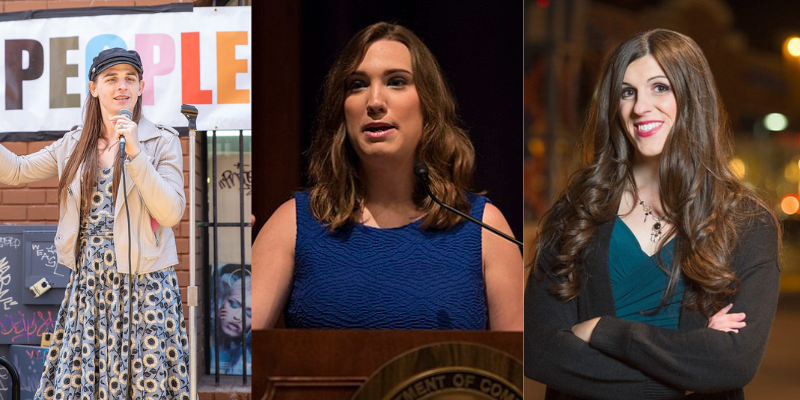
Composite via Canva.com.
On November 7, Danica Roem became the first openly transgender woman elected to serve in the Virginia state senate, after having served in the legislature’s lower house. She is among a growing list of transgender legislators at the state level, including Sarah McBride in Delaware, James Roesener in New Hampshire, and Zooey Zephyr in Montana, to name just a few. Roem’s victory is all the more noteworthy because Virginia is one of the many states targeted by efforts to roll back rights for transgender people.
Political science scholarship on transgender candidates suggests that this wave of wins for transgender candidates is somewhat unexpected. In 2015, Phil Jones and co-authors examined support for transgender candidates. They found that when given a choice between a transgender candidate of their own party or a cisgender candidate from the opposing party, respondents’ support for their own party dropped from 68% to 37%. Some respondents even indicated that they would switch their support to the opposing party’s candidate (almost a quarter increase from 7% to 23%). In 2021, Gabriele Magni and Andrew Reynolds examined how respondents in the U.S., U.K., and New Zealand would vote when presented with lesbian, gay, and transgender candidates, and found that U.S. respondents were more likely to punish these candidates. These effects were particularly strong for how conservative voters in all three countries viewed transgender candidates.
So what explains the election of transgender legislators? And what can we expect as we head into 2024 – when Delaware voters will decide whether they want Sarah McBride to represent the state in Congress?
Part of the answer might lie in scholarship on lesbian, gay, bisexual, and transgender social movements. For example, Philip Ayoub’s work on sexual minorities in Europe found that mobilizations to eliminate rights for lesbian, gay, bisexual, and transgender people paradoxically increased support for sexual and gender minorities. That’s because these fights over protections launched public discussions about rights that were ultimately settled in favor of LGBT people.
Additionally, attitudes differ by party affiliation. Donald Haider-Markel and co-authors found that Democratic voters were more likely than Republicans to support transgender candidates, extending their existing tendency to support Black and gay and lesbian candidates. To date, the majority of transgender candidates who have been elected are Democrats, followed by a handful of Libertarians and just one Republican. Roem’s win was in a district that leans Democratic.
Finally, the Jones study shows that what scholars call “parasocial contact” – when positive portrayals of minorities in movies and television shows shifts how people view those groups – increases levels of support for LGBT people. Increasing representations of transgender people in popular culture might be responsible for the electoral shifts we saw last week. The new cohort of Gen Z voters, 15% of whom identify as LGBTQ+ and consume media with positive portrayals of transgender people, might mean that even more transgender people will be elected in future elections.



